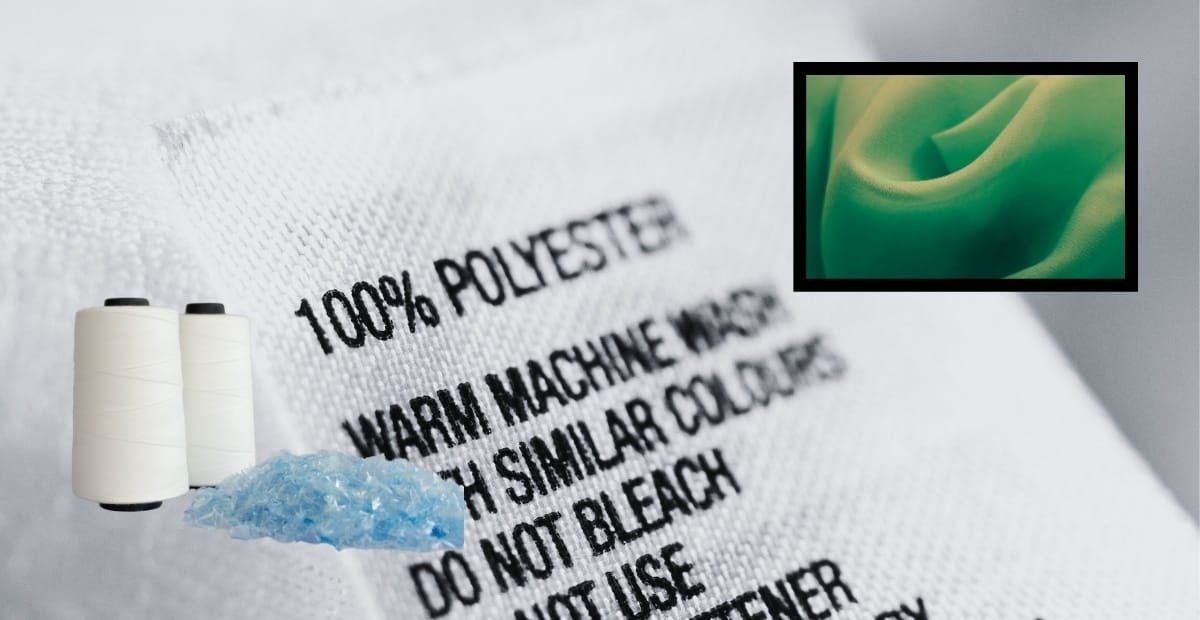Polyester is one of the most widely used synthetic fabrics in the textile industry. Known for its durability, wrinkle resistance, and affordability, polyester fabrics come in various forms, each with unique properties suited for different applications. In this blog post, we will explore different types of polyester fabrics, from PET to PCDT and beyond.
Overview; types of polyester fabric
| No. | Types of Polyester Fabric | Characteristics |
|---|---|---|
| 1 | PET (Polyethylene Terephthalate) | Durable, lightweight, moisture-wicking, easy to dye, recyclable. |
| 2 | PCDT (Poly-1, 4-cyclohexylene-dimethylene terephthalate) | Elastic, durable, soft, heat-resistant. |
| 3 | Plant-Based Polyester | Biodegradable, soft, breathable, lower carbon footprint. |
| 4 | Recycled Polyester | Eco-friendly, durable, made from post-consumer plastic waste. |
| 5 | Microfiber Polyester | Ultra-soft, lightweight, highly absorbent, resistant to pilling. |
| 6 | Filament Polyester | Smooth, lustrous, wrinkle-resistant, less breathable. |
| 7 | Staple Fiber Polyester | Soft, fluffy, similar to natural fibers like cotton. |
| 8 | High-Tenacity Polyester | Extremely strong, abrasion-resistant, used for industrial purposes. |
| 9 | Low-Pill Polyester | Resists pilling, maintains a neat appearance over time. |
| 10 | Antistatic Polyester | Reduces static cling and dust attraction. |
| 11 | Flame-Retardant Polyester | Resists burning, self-extinguishing, heat-resistant. |
| 12 | Water-Repellent Polyester | Water-resistant, quick-drying, durable. |
| 13 | Antimicrobial Polyester | Inhibits bacteria growth, odor-resistant, hygienic. |
| 14 | UV-Resistant Polyester | Blocks harmful UV rays, protects against sun damage. |
| 15 | Biodegradable Polyester | Eco-friendly, designed to break down more easily in the environment. |
What is Polyester Fabric?
Polyester is a synthetic fabric made from polymers derived from petroleum. It was first developed in the early 20th century and quickly became popular due to its durability, versatility, and cost-effectiveness. Polyester is widely known for being resistant to wrinkles, shrinking, and stretching, making it a favorite choice for manufacturers and consumers alike.
If you are curious about what is polyester fabric and want to read more on this topic we recommend to read this article “Read More”
The two main types of polyester fibers are PET (Polyethylene Terephthalate) and PCDT (Poly-1, 4-Cyclohexylene-Dimethylene Terephthalate). However, these are just the starting points. Let’s examine the various types of polyester fabric in more detail.
Definition of Polyester Fabric:
Polyester fabric is a synthetic textile made from petroleum-based polymers, known for its durability, wrinkle resistance, and versatility. It is widely used in clothing, home textiles, and industrial applications due to its strength, affordability, and easy care. Sourced from “https://www.sciencedirect.com“
1. PET (Polyethylene Terephthalate)
PET is known as a polyester most commonly found in clothes, home fabrics, and for industrial purposes. It comes from petroleum-based chemicals and yields great strength and resistance to moisture along with durability. As a result, PET polyester is common in the manufacturing of sportswear, t-shirts, and household textiles because it is lightweight and dries quickly.
Key Features:
- High tensile strength: PET polyester is incredibly strong, making it suitable for both apparel and industrial applications.
- Resistant to wrinkles and shrinking: The fibers retain their shape and resist deformation, ensuring long-lasting garments and products.
- Lightweight and easy to care for: PET polyester is lightweight and dries quickly, making it ideal for travel-friendly clothing.
- Moisture-resistant: The fabric repels water and dries quickly, making it suitable for humid or wet environments.
- Recyclable: PET polyester can be recycled, making it an eco-friendlier choice in comparison to other synthetic fibers.
2. PCDT (Poly-1, 4-Cyclohexylene-Dimethylene Terephthalate)
Although PCDT polyester is not as common as PET, it is recognized for superior elasticity and resilience. Unlike PET, it has a flexible molecular structure which allows heavy-duty usage such as in upholstery, curtains, and industrial textiles. The increased stretchability and durability of PCDT make it a great candidate for high-performance fabrics.
Key Features:
- Excellent elasticity: PCDT fibers can stretch and recover without losing their shape, offering a high degree of flexibility.
- Strong and durable: Despite its elasticity, PCDT retains exceptional strength, making it perfect for heavy-duty applications.
- Smooth texture: The fabric’s structure provides a sleek and soft finish, enhancing its aesthetic appeal.
- High resistance to abrasion: PCDT polyester performs well under repeated stress, ensuring longevity.
- Better draping ability: Its elasticity and weight allow for improved flow and fit, making it suitable for curtains and stretchable garments.
3. Plant Based Polyester
Plant-based polyester, much in demand due to the ever-increasing need for sustainable textiles, offers an alternative to the old petroleum-based polyester. It is produced from renewables such as corn, sugarcane, or other biomass materials, lessening the environmental impact. In addition to employing a greener production process, this type of polyester maintains the strength of traditional polyester.
4. Recycled Polyester
Recycled polyester, or rPET, is produced from plastic waste products like PET bottles. rPET helps to mitigate plastic pollution and reduces the need to produce virgin polyester. Unlike traditional polyester, rPET is still beneficial for eco-friendly brands because it is still strong, flexible, and capable of moisture-wicking. These qualities make rPET suitable for sustainable fashion.
5. Microfiber Polyester
Microfiber polyester is composed of ultra-fine diagonally woven fabric fibers which leads to soft and smooth fabric that has great absorbent properties. It is often found in cleaning cloths and towels. It is also common in activewear because of its moisture-wicking and fast drying features. It’s hypoallergenic and therefore safe for sensitive skin because of the fine fibers.
6. Filament Polyester
Filament polyester comes from multifilament polyester fibers, giving it the characteristic of being smooth and strong. Fabrics that require high durability while also feeling silk-like to the touch, like lingerie, sportswear, and some textiles, all use this type of filament.
7. Staple Fiber Polyester
Staple fiber polyester is built from short, usually blended fibers that when spun together makes a yarn-like structure. The soft texture of this polyester makes it comfortable especially when blended with natural fibers like cotton. Staple fiber polyester is often used in blended fabrics to increase softness, breathability and comfort.
8. High-Tenacity Polyester
High-tenacity polyester is best utilized in industrial processes like making ropes, conveyor belts, and heavy-duty garments, as it is specifically designed to be highly resistant to abrasion, stretching, and wear while having superior tensile strength and durability which prolongs its lifespan in demanding environments.
9. Low-Pill Poly Fabric
Low-pill polyester is most often seen in clothing and upholstery and is made specifically in a manner to maintain its aesthetic qualities by not allowing fabric fibers to be formed into small balls on its surface with infinite washes, which would result in an unappealing appearance.
10. Antistatic Polyester
Antistatic polyester makes use of particular coatings or additives in order to eliminate the possibility of static electricity accumulating to prevent the possible discharge issues which can be harmful during electronics manufacturing, cleanroom work, and even protective clothing.
11. Flame-Retardant Polyester
Flame-retardant polyester is widely used in the production of safety apparel, home furnishings, and automotive textiles due to its capability of chemically resisting ignition and decelerating the spread of fire in addition to having a critical requirement of fire resistance. It is best suited in places like where the fabric needs to be protected from fires.
12. Water-Repellant Poly Fabric
Water-repellent polyester has a coating or treatment that makes them resistant to moisture intrusions. This material is used in outdoor equipment, rainwear, and the upholstery of cars where water resistance is crucial. Water-repellant polyester differs with waterproof polyester in that it allows perspiration to escape while preventing moisture entry.
13. Antimicrobial Polyester
Odor and hygiene issues can be improved with the use of antimicrobial agents with antimicrobial polyester. This type of polyester is widely used in medical textiles, sportswear, and bedding to sustain cleanliness and freshness.
14. UV-Resistant Polyester
Polyester undergoing this treatment is unfaded, undegenerated and permanently set to maintain for long periods of sunlight exposure. Ideal uses of this type of polyester are outdoor awnings, patio furniture, swimwear and outdoor paraphernalia.
15. Biodegradable Poly Fabric
This innovation in biodegreadable materials aims to provide polyesther with the same advantages while being environmentally friendly. Biodegradable polyester helps Brand examples concentrating on sustainable fashion to minim supply ecological destruction.
Conclusion
These different types of polyester fabric , have significantly changed and now offer a wide array of specialized types designed for varying uses. Strength, sustainability, water resistance, and even fire protection are features that specific polyester fabrics are designed with. As a designer, manufacturer or consumer, it is beneficial to understand these differences in order to make more informed decisions. With growing innovations in the textile industry, the future for polyester will most likely bear greater sustainable performance and multifunctional fabrics.
Frequently Asked Questions!
PET (Polyethylene Terephthalate) is the most widely used polyester fabric due to its strength, durability, and versatility.
Yes, recycled polyester maintains the same durability, flexibility, and moisture-wicking properties as conventional polyester while being more environmentally friendly.
Plant-based polyester is derived from renewable sources like corn or sugarcane instead of petroleum, making it a more sustainable alternative.
Yes, UV-resistant polyester is specially treated to prevent sun damage and color fading, making it ideal for outdoor use.
Yes, biodegradable polyester breaks down naturally, reducing environmental waste and pollution.
There are 15 types of polyester fabric. These are the most common types of polyester.




